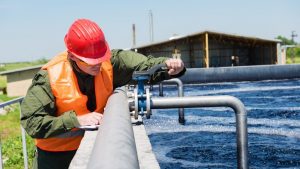Self-driving vehicles could be rolling on Ontario roads in the next five years but there’s a host of regulatory and infrastructure adjustments to be made in preparation for them, Ontario Minister of Transportation (MTO) Steven Del Duca recently told the Toronto Board of Trade.
The MTO is in the process of planning a five year pilot program to evaluate the concept of driverless cars.
The current phase is a discussion with the expectation that AVs (autonomous vehicles) will be in showrooms by 2020-2025. From an initial call for comments the MTO received 27 replies with only one respondent concerned about the impact to seniors and pedestrians. The rest were supportive of the test, said MTO Spokesman Bob Nichols.
Del Duca said 12 U.S. states already have regulations or are thinking about how they will deal with AVs and there will be ripple effects on health care, the courts and insurance around liability issues.
AVs aren’t suddenly going to take over the roads and highways overnight, cautions Professor Steven Waslander, an assistant professor in the University of Waterloo’s department of mechanical and mechatronics engineering, who is actively working in the area of vehicle automation.
"It will be in stages," he said, noting there’s already some level of autonomous mechanization on the roads already.
"The Mercedes, for example, has collision avoidance for low speeds and it’s almost impossible to have a collision at under 30 km/h because it just brakes."
As such, Waslander said the first vehicles will be automated for highway travel because by definition they are controlled access roadways with generally constant speeds and with all vehicles travelling in the same direction (assuming divided highways like the 400 series for example).
"It really is going to be an evolution of technology increasing levels over time," he said.
Highway tracking is a fairly simple computational task with fewer variables compared to driving in rush hour traffic in downtown Toronto where cyclists, pedestrians, taxis, delivery trucks and other vehicles present an overwhelming amount of data to capture, recognize and react to in real time. In a January report, the Conference Board of Canada projects an annual saving of $65 billion from fewer vehicle deaths, injuries and repairs.
There will also be setbacks for some sectors. Body shops may see business decline (though vehicles will be more expensive to repair) and insurance companies may also find the need for actuaries decline over time, something the industry is already talking about. There are predictions their staffing levels will shrink dramatically as rates fall.
The report urges provinces and territories to ramp up their plans to deal with AVs and to incorporate their eventuality into urban planning strategies. In the meantime, the MTO’s five year test will require all AVs to have a human driver with a valid licence and third party insurance. AVs must be approved and not be "home conversions" and have signs indicating it is an "AV."
AV operators much be trained and one presumes certified in how to take control in the event of technology failure or emergency overrides and will still be liable for Highway Traffic Act infractions and penalties.
Ontario plans to phase in AVs, limiting them to specific roads, speed limits, traffic volumes and perhaps times. Owners must also apply to MTO for approval before vehicle permit and licence plates for the AV are issued.
In addition, the technology must have an emergency override, an indicator to show it is operating in autonomous mode, a failure alarm and an onboard black-box — standard in all vehicles from 2016 anyway — to capture data about operations of the vehicle from at least 30 seconds before any collision. No timelines have been set, said Nichols, nor where the AVs will be allowed to operate first.
Waslander said as the technology advances, AVs will also evolve. One of the first changes will be vehicle-to-vehicle communication. Telemetrics, as it’s known, will pool data from cars anonymously about location, direction, speed, road conditions and other variables.
Software will ascertain if the vehicles’ operating mode should be adjusted accordingly, for example, if there is black ice up ahead at a specific location. The vehicle may even prompt the "driver" for a change of route if it detects snarled traffic ahead.
Waslander said for the MTO and various licensing and regulatory bodies, there are many other considerations, right down to maintaining the painted lane markers.
"The technology uses the lane markers to know if it is in a lane," he said. "So they need to be brightly and clearly painted."
Cracked, faded lane and edge markers, or lanes covered with dirt and snow could create problems for AV technology, he notes.
Similarly, gravel roads or cottage country back roads, with no lane markers, also represent a problem for lane-centric navigation.
Also, away from highways, the technology isn’t yet able to navigate as well in an urban street environment and so it will be some time before things change there.
Nichols said the MTO believes as the technology evolves, great navigational reliance will be placed on "highly detailed maps. GPS and advanced vision systems. While no significant infrastructure investments are planned for at this time, we will continue to consider investments that will provide a return to the province and further our understanding of requirements and standards to develop an autonomous friendly jurisdiction."
"There are just too many things to compute," Waslander said.
"For example, if there was a cardboard box blowing on the road, most drivers would just ignore it. But AV technology doesn’t know it’s a cardboard box. It doesn’t know what a raccoon is. It just sees an object."
As a result, drivers need to be alert to step in and take control but, humans being humans, are more likely to be distracted and texting on our cellphones, eating a sandwich or otherwise distracted, he said. GPS mapping may also be something government agencies take over or at least contract out to ensure real time adjustments.
Construction or accidents may necessitate the closing of roads temporarily and that data needs to be updated to GPS, Waslander said, because with AV it becomes a safety issue.











Recent Comments
comments for this post are closed